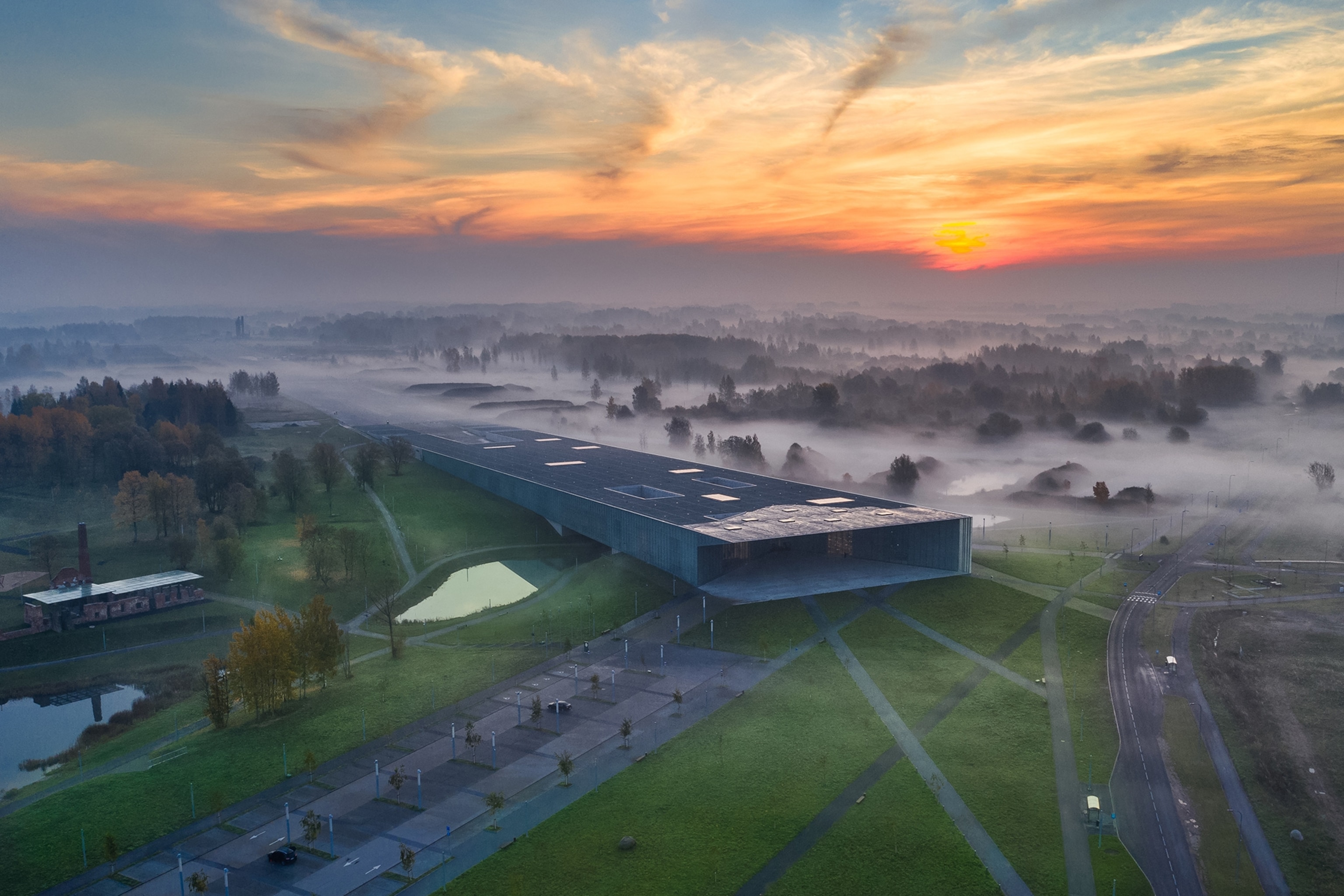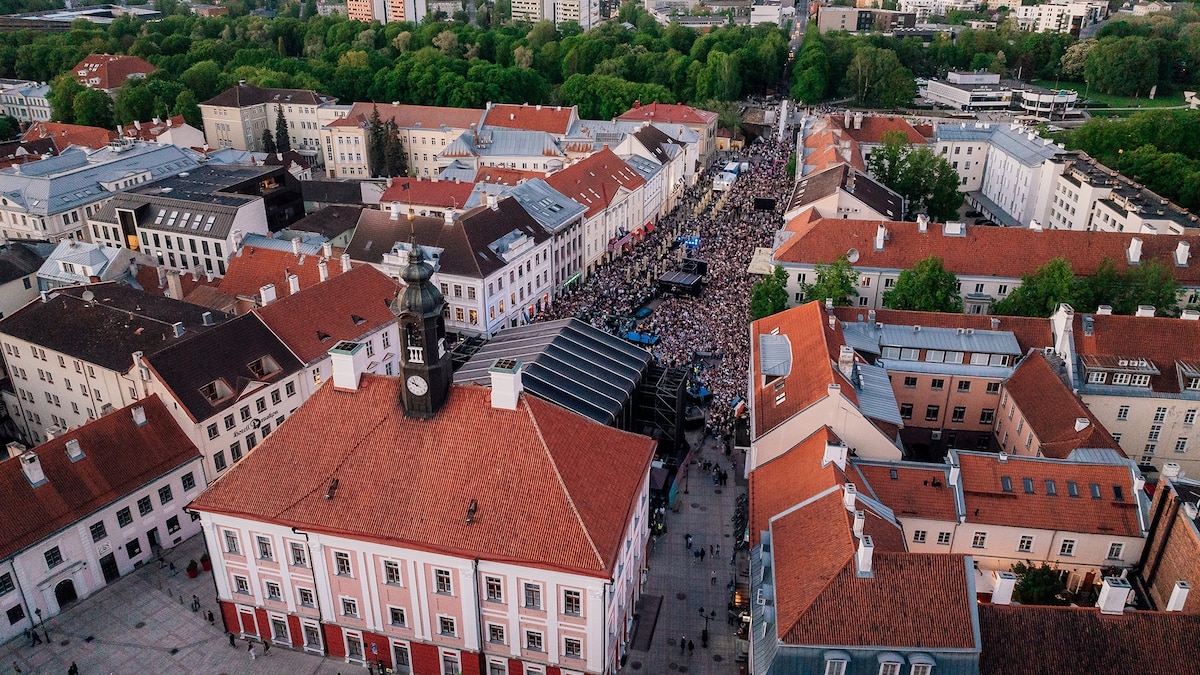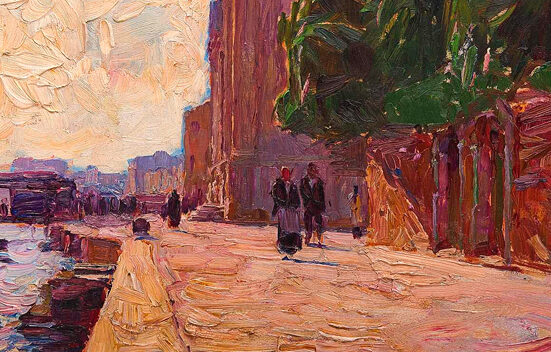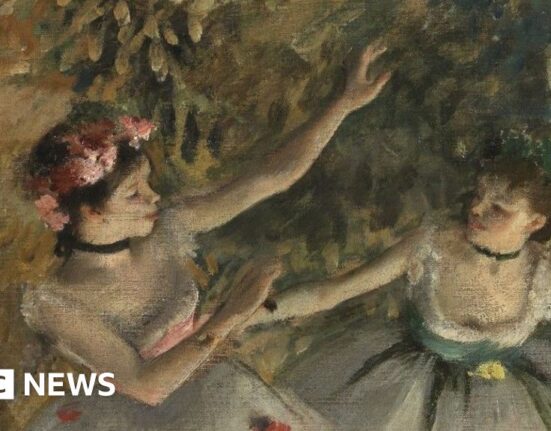This article was produced by National Geographic Traveller (UK).
The Kissing Students statue in Tartu is many things — a symbol of the city, a gathering point and the inspiration of Kissing Tartu, a one-day festival comprising art, musical performances and a mass kissing event. And while it seems like it could be the highlight of the year in this small Baltic city, Tartu is worth a visit year-round as it takes up its mantle as a European Capital of Culture for 2024.
Standing in front of Tartu Town Hall, the Kissing Students statue is the main meeting point in Raekoja plats, the city’s central square. The cobblestoned plaza, encircled by cafes, cocktail bars, boutique shops and even a tattoo parlour, takes on various roles over the seasons — an ice rink in winter, an open-air cinema in summer and an ideal starting point to explore the city year-round. Here you’ll also find the Kunstimuuseum (Tartu Art Museum), affectionately known as ‘the leaning house’; the 18th-century mansion was built atop a previous medieval structure, on unstable soil. Expect local art exhibits, including the current exhibition on 1980s Estonian caricature, which promises some light-hearted laughs until late July.
Dive into one of the narrow lanes, the Rüütli Street, and you’ll find people coming to eat and drink al fresco when the weather is fine. Here, the underground Gambrinus beer shop provides a vast selection of craft beer from Estonia and beyond — perfect for stocking up for a picnic in the nearby Botanical Gardens. Wandering among the blooming flowers and relaxing in the pergola by the pond is an essential Tartu experience, giving visitors a taste of the calm and easygoing nature of the city.
Walk north from the main square and you’ll come across the 14th-century St John’s Church, famous for its copper-coloured brick exterior and human figurines adorning its façades. Although the reasons for creating them remain unknown, the handmade terracotta busts are believed to represent past residents of Tartu, who were a part of the church’s congregation.
Five minutes north west of the Town Hall Square is the impressive main building of the University of Tartu. A shrine to education and architectural symmetry, the grey neoclassical building has six large Ionic columns carrying a triangular pediment, making the façade unique in the city in its grandeur. The university, founded in 1632 by King Gustav II Adolf of Sweden (then-ruler of Estonia), was the first step in shaping Tartu into an intellectual and cultural hub. To this day, the presence of the university is prominent in the city, as many residents are connected to the institution in some way and many migrate here for academic reasons.
Towards the other side of Tartu, behind the university’s library building, is a cultural centre that houses a special spot — a quirky record store called Psühhoteek, run by ‘vinyl whisperer’ Ahto Külvet. Here, you can flip through rare Soviet-era records and niche, once-contraband American albums with fake covers to allow them to be distributed in Soviet Russia, while listening to Ahto’s fascinating tales of musical treasure hunting.

Tartu’s Karlova neighbourhood is known for its traditional wooden houses, dating back to the 20th century. Photograph by Erge Jõgela
One of Tartu’s most intriguing areas is the Karlova neighbourhood. Towards the south of the city, this area is famous for its historic wooden houses, often with art nouveau details, many dating back to the early 20th century. Now inhabited by young creatives and an alternative crowd with a strong sense of community, Karlova has become the city’s bohemian quarter. Start your morning with a well-brewed coffee at Karlova Kohv and come back in the evening for a drink at Barlova, a locals’ favourite run by a hardcore Juventus fan. On weekend nights, expect a DJ set and Tartuvians gently reaching over each other to pick up their beers from the bar.
It’d be a shame to come to Tartu and omit the Estonian National Museum from your itinerary. Proof of the city’s artistic identity, the museum has transformed the former site of a Soviet-era military airfield runway into a cultural space. The permanent exhibition on Estonia’s history, from medieval times to the modern day, is well-curated and exhilaratingly interactive. Visitors can digitally flip through books from the 16th century, explore traditional storytelling with motion-sensing animations and save video components on the chip in their ticket and access them later via a QR code. Throughout the year, the museum will be hosting various events as part of the European Capital of Culture activities, such as the ongoing exhibition on the works of the lesser-known Prague school of surrealists and Estonia’s own surreal artists, running until September.
But perhaps Tartu’s most precious asset is its access to the wider southern region of Estonia. Only 25 miles away from the city, a constellation of villages along the shores of Lake Peipus make up the Onion Route cultural trail, named after the bulbous onions grown in the region’s rich soil. Here, local communities preserve traditions and share their culture by offering farm visits, and there are cultural museums, workshops and photo opportunities of countless onions at every corner.

The Estonian National Museum, built on top of a Soviet-era airfield runway, transforms a military site with an oppressive history into a cultural space celebrating Estonian heritage. Photograph by Tanel Kindsigo
An important spot on the trail is the Kolkja Museum of Old Believers, where you can learn about the Old Believers, a unique local community who escaped Russian religious persecution in the 17th century. On top of displaying historic artefacts from the community, the museum allows guests to observe a virtual reality simulation of an Old Believers’ Orthodox church service, a ritual outsiders are usually not allowed to attend.
For a wholesome family outing, visit the Peipsimaa Heritage Centre, an old farmhouse on the Onion Route now serving as a museum of textiles and chicory farming. Kids can enjoy treasure hunts or join print-making workshops to create their own textile prints, while adults get absorbed in designing indigo-coloured tote bags. Make sure to conclude the experience with homemade pastries and a warming cup of chicory coffee, a dark-brown brew rich in treacly flavours and with a smooth texture.
Throughout the year, visitors can benefit from the city’s vicinity to lakes and forests by kayaking, hiking and camping in the wilderness. For extreme adventure seekers, plan a trip around Kallaste Karakatitsa, a Mad Max-style car race held every year in February on the frozen Lake Peipus. For a more calming time, an alternative is to enjoy the great outdoors through a dip in a cold pond after a smoke sauna session. It’s just like a regular sauna, but the room is first filled with the smoke of burned leaves and then cleared, leaving behind soot and a smoky smell, supposedly amplifying the health benefits of the experience.
It’s easy to spot postcard-worthy panoramas in the region, as huge National Geographic-inspired yellow frames are sprinkled across scenic locations. One of 28 such frames is placed near Alatskivi Castle, a 19th-century cream-white manor with pointy turrets, open to the public for visits and events. The manor gardens stretch wide, even including a disc golf course — this is a popular sport in Estonia, where players throw a frisbee disc to far-away baskets. Be sure to stop by Alatskivi Mõisamaitsed, a local shop on the grounds serving various homemade berry wines — you’ll want to try the rhubarb and strawberry.
Four events in Tartu not to miss during 2024:
1. Wild Bits
Wild Bits is a series of technological art installations and projects spread across southern Estonia’s farms, forests and meadows. Visitors can interact with the ‘techno art’ in the fields, such as exploring lake biodiversity from a rowboat or listening to a radio that changes tunes based on the direction and strength of the wind. Until 15 September, tickets £8.50.
2. Peipsi Food Street 175km
The Peipsi Toidu Tänav is a two-day pop-up event where restaurants, food producers and local chefs will dot a strip of 175km (109 miles) along Lake Peipus to serve hungry visitors. Traditional Estonian food will be the mainstay of the event alongside more innovative dishes, as well as workshops with local chefs. 17–18 August, free to attend.
3. Paganlik Pärimusöö, Pagan folklore night
Old pagan traditions take the form of theatrical plays, dances and forest exhibitions in this summer folklore evening. Join hundreds of Estonian dancers later in the night as the show turns into a party. 24 August, tickets from £8.
4. Ryoji Ikeda Exhibition
Famous scientist-cum-music artist Ryoji Ikeda, whose CERN-inspired art project won international awards in 2015, will be staging a solo exhibition at the Estonian National Museum. This will feature audiovisual installations made with scientific data, in collaboration with the Estonian Genomics Foundation and Estonian Philharmonic Chamber Choir. 2 November 2024–2 March 2025, tickets from £4.
From Tallinn, Tartu is a direct train journey or a two-hour bus ride going through scenic forests of furrowed white birch trees. In Tartu, stay at the Art Hotel Pallas, a boutique hotel inspired by the art school that once occupied the same location, a short walk from the main bus terminal and the city centre. From £85, B&B.
This article was created with the support of Tartu2024.






